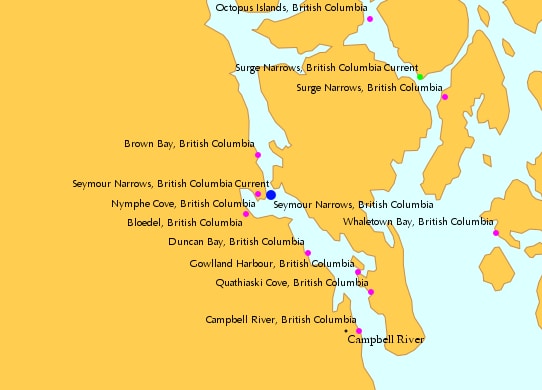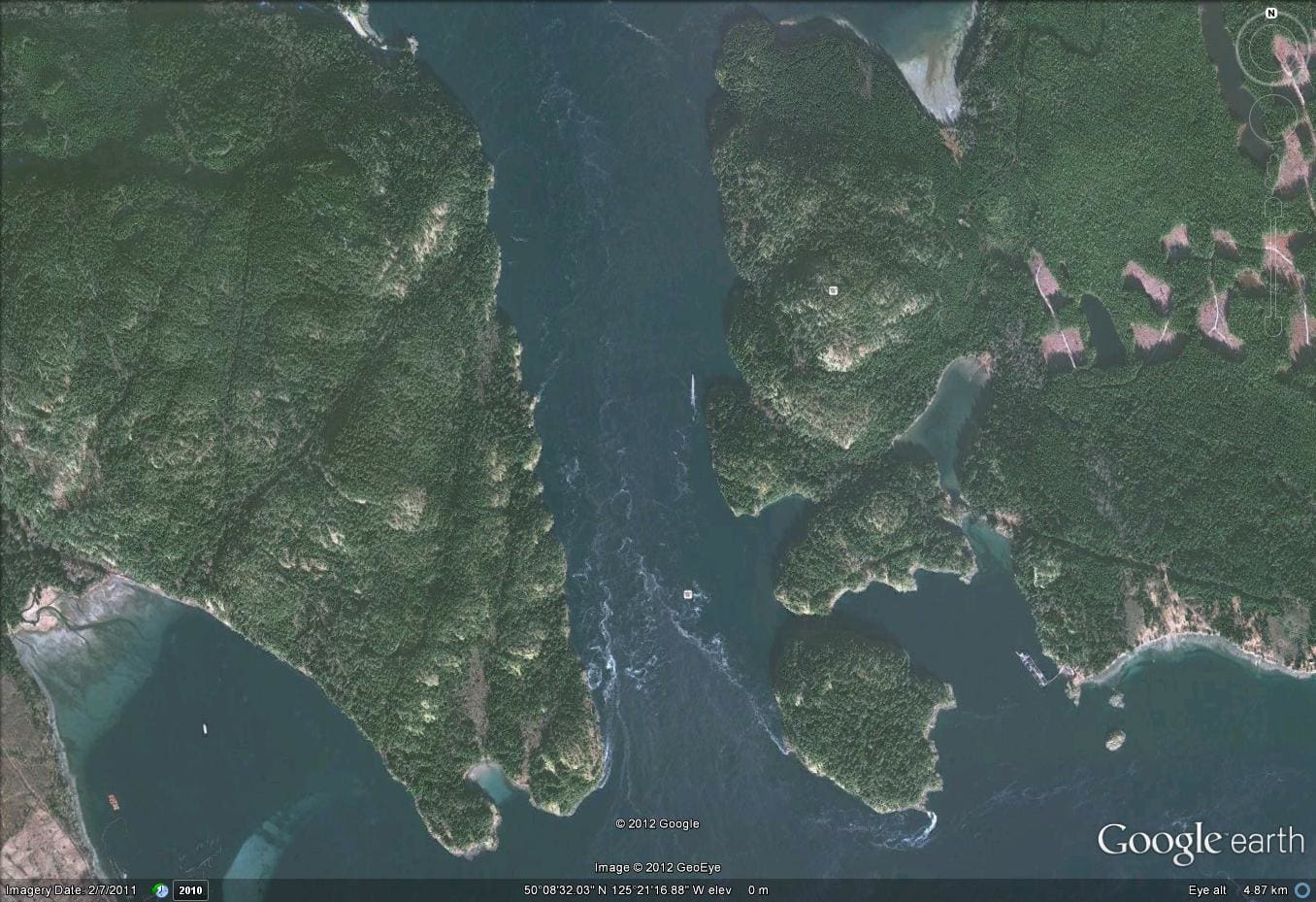Sailing the Canadian Inside Passage through British Coloumbia is one of the highlights of the cruise but it is sometimes a little bit under appreciated as all the focus tends to be on the Alaskan part. A 2nd challenge is that the scenic cruising takes place either on the first day of the cruise Northbound, or the last day of cruise Southbound, and then there is so much else going on. So for the guests it can be a very busy day if they want to partake in everything that is happening. The amount of Inside Passage that you see really depends on one crucial factor: Seymour Narrows slack tide. The ship has to make Ketchikan on time when going Northbound and it has to make Vancouver on time when going Southbound. So for an ideal schedule Seymour Narrows slack tide has to take place between 23.00 and 01.00 the next morning. With that time frame you can plan for regular sightseeing while keeping the cruise schedule and not having to race through the Inside Passage to make it on time. Unfortunately the tides do not always act in accordance with the Holland America Line cruise brochure so sometimes the slack tide is as early as 20.00 in the evening before Vancouver or as late as 02.00 in the morning when Northbound. And those 3 to 4 hours difference will play havoc with the time available for sightseeing.
Seymour Narrows is the smallest part in the waterways which separate Vancouver Island from the Main Land. We have to go through there if we sail from Vancouver. Otherwise we have to sail south to Victoria and then out to open sea via Strait Juan de Fuca and then back north again in the Pacific Ocean. Ships sailing from Seattle have that option and quite a few do so when the Pacific Ocean is in a good mood and the weather is quiet. They then miss part or all of the Canadian Inside Passage but compensates that with calling at Tracy Arm before going to Juneau.
However we have to go through the Seymour Narrows and the problem is the currents. From Pine Island in the North West and from Victoria in the South the water can flow freely all the way around Vancouver Island. Not a problem in principle, it is just that the opening for that water to flow through is getting very narrow at Seymour Narrows. Make an opening smaller with the same amount of water having to go through and the result is stronger and stronger currents. With a spring tide running, the current velocity can go up to 14 knots and then you do not want to be there.
Safe passage is possible as soon as the current runs 4 knots or less. It has been done at a higher velocity but when doing so the margin for mistakes goes down to zero. So sticking with our safe philosophy of “there always has to be a plan B” we follow the pilot’s advice and go through with currents under four knots. Thus all the ships who have to go through, cruise ships, tug and tows, fishing boats and whatever else that travels up and down the Inside Passage aims for slack tide. The moment the current goes from flooding to ebbing and vice versa. They all know that will not work out as not everybody can go through at the same time but you have to aim for something.
Then the tinkering with the times start. All ships over 300 tons in size have to participate in the Vessel Traffic System which operates through the whole area from Victoria to Prince Rupert. They advise the times which the ships are aiming for and then the pilots start to adjust what will work best for each ship. That normally results in a nice parade coming down and/or going up. The Captains who have been on the coast already know how this works so often they aim for a time well before slack tide so they can be sure to get through before the other ships want to go through. Log tows often need the exact slack tide to get their floats around the corners and as they block the whole passage, the cruise ships want to be passed them. More tomorrow.
Tomorrow we are in Vancouver and scheduled to dock at Canada Place West side by 07.00 hrs. The weather is remaining chilly 12oC /54oF which is really too cold for the time of the year and there is even a chance of a shower. But no wind is predicted and thus it will feel no colder than the 12 oC.



Leave a Reply